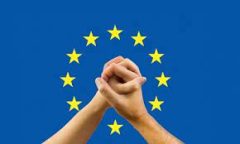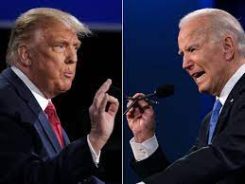Contents
According to some, the European Union is a great civilization project, according to some, it is a colonial tool of the imperialist West, or according to some others, it is a union established by the world’s dominant powers to balance the disproportionate power of the United States of America… It is obvious that these are some of the first facts and concepts that come to mind when the EU is mentioned. In addition, when we look at world political history, we see that the countries of the European continent have worn each other out with constant wars. These wars and conflicts reached its peak with World War II.
After the war, European countries, which came out of World War II with heavy losses, adopted the idea of gathering around a union that would have strategic goals in order to prevent similar wars from happening again among themselves. On the other hand, the emergence of the United States of America and Soviet Russia as two superpowers that formed a chaotic world after the war also encouraged European countries to step forward in world politics as a neutral third power.
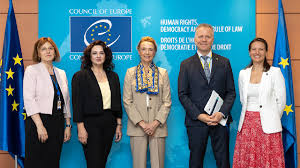
At this point, we would like to point out that; In terms of personal development, it is important to know world politics and follow geopolitical developments in the world. In this context, the issue of the European Union and its future has become very important, especially after the departure of the United Kingdom from the union along with the Brexit referendum. Accordingly, recent important developments that closely concern the world agenda; The Russia-Ukraine War, the Israel-Gaza war and other important political, economic and military developments make the future of the European Union project much more important.
In this stage, we are opening the EU file in this article 🙂
What is EU? When established?
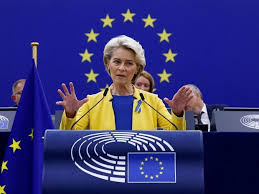
The European Union (EU), whose history and development process we will briefly explain below, is a political and economic organization that basically regulates the political, economic and social relations between European countries and enables member countries to act as a whole political power. The EU, which was previously known as the European Economic Community (EEC) and focused more on the economic union at that period of time, turned into a political union in 1993 and was named the European Union.
After the latest expansions, the organization, which has 27 members as of 2024, is one of the greatest powers in the world economy.
On the other hand, the EU is also a demographic power. In this concept, with its population of approximately 500 million people, it is trying to shape world politics under the leadership of Germany and France. In this regard, the European Union continues to be a decision-making and development-directing power, from the Russia-Ukraine war to the Israel-Hamas war, from the tensions and conflicts in the Balkans and the Middle East to political developments across the world.
EU History: Founding Members
Although it later turned into an economic and political union, the EU was designed as a Coal and Steel community when it was first established in 1951. If you are someone who was not alive in 1951, when you read the phrase coal, iron and steel, you may wonder what the connection is. 🙂 However, if we consider the conditions of the period, we need to remember that the most important raw materials of war and heavy industry in the 1950s were iron, coal and steel.
In line with all this information, in order to eliminate the risks of new conflicts arising from these important raw materials in Europe, the formation of the European Coal and Steel Union, of which France and Germany were two of the most important founders, was very important for that period. In this context, the founding member countries of the EU are France and Germany, as well as Italy, the Netherlands, Belgium and Luxembourg.
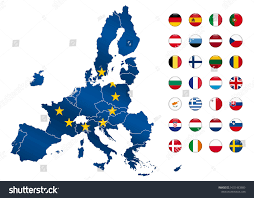
The European Coal and Steel Community transformed into an economic and political union in 1957, first becoming the European Economic Community (EEC) and then finally the European Union – EU – in 1992. The framework agreement known as the Maastricht Criteria or Treaty is of great importance in the finalization of the Union. With this agreement, the necessary criteria and minimum conditions to become a member of the union were determined.
It should be noted at this point that; a series of developments in the 1990s were important in the transformation of the European Economic Community into the EU, which is more of a political union. After dissolution of Union of Soviet Socialist Republics, the unification of the East and West German Republics and the establishment of political unity in Germany was a very important development for the union.
EU Countries List
As the Iron Curtain countries transitioned to democracy one by one, the United States remaining the only superpower was important in the emergence of the European Union as a balancing power element.
We have previously stated that the founding member countries of the EU are Germany, France, Italy, the Netherlands, Belgium and Luxembourg. In this direction, the European Economic Community, which was renamed the EU in 1992, made its first expansion by including the United Kingdom, Ireland and Denmark in 1973, while it was the European Community (EC). The EU, which made its second enlargement with Greece joining in 1981, made its largest enlargement in 2004 by including 10 countries. If we pay attention, the union has carried out its latest expansions by including the Northern countries, which we call the Baltic countries.
In this context, Russia and Russian Leader Putin also reacted to the European Union administration expanding towards its borders. It is important to read the Russia-Ukraine War and Ukraine’s EU membership request from this perspective.

The European Union, which wants to strengthen itself as an economic power as well as a political union, launched its common currency, the Euro, on January 1, 2002 to achieve this goal. The European Central Bank, which started operating in 1998, is responsible for carrying out the monetary policy of the European Union members as the common central bank of the EU countries.
European Union Members
Its main purpose is to protect the value of the Euro and ensure price stability in Europe. The EU countries, which numbered 28 over time and decreased 27 after the UK left the European Union after Brexit, are not economically homogeneous and have different structural problems. This makes the task of the European Central Bank difficult. This situation was clearly demonstrated in the European Debt Crisis that started in the Eurozone in 2009.
The list of 27 European Union member countries as of 2024 is as follows;
| Germany | Estonia | Spain | Luxemburg | Slovakia |
| Austria | Finland | Sweden | Hungary | Slovenia |
| Belgium | France | Italy | Malta | Greece |
| Bulgaria | Croatia | Cyprus | Poland | |
| Czech Rep. | Netherland | Latvia | Portugal | |
| Denmark | Ireland | Lithuania | Romania |
European Union Institutions
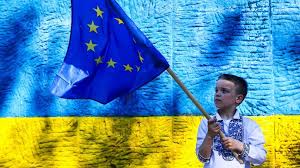
A union that is both crowded and geographically widespread, such as the EU, needs institutions and bodies for proper and effective management. In this context, the European Union has many upper and lower bodies and institutions, from the economy to the judiciary and from social life to political authorities. The most important of these institutions are the European Parliament, whose members are directly elected by EU citizens every five years, the European Commission, which acts as the executive body of the union, and the European Central Bank, which is responsible for the price stability of the Eurozone.
To sum up as in every state or multinational institution, institutions, bodies and rules are of vital importance for the European Union. When we look at the reasons for the development of developed countries, we see that their institutions and bodies, especially democratic and law-related institutions, work correctly and fairly.
In this context, we can list the main organs and institutions of the European Union as follows:
- European Parliament
- Council of the European Union
- European Commission
- European Court of Justice
- European Central Bank
- European Court of Auditors
What is Brexit?
The word is a combination of the words Britain and Exit. The combination of the word Britain and the word exit symbolizes the United Kingdom’s exit from the EU. As we mentioned above, England became a member of the European Economic Community in 1973. In the meantime, as the time went on, the number of secessionists who claim that “the contribution payments made to the European Union within the country and the EU’s trade policies harm the UK” increased.
According to them, the UK will be more profitable if the country’s foreign trade leaves the EU and is managed according to the standard international trade rules determined by the World Trade Organization.
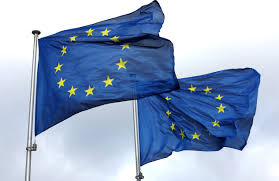
Years passed in this way, and when history showed the year 2016, England held the Brexit referendum under the leadership of pro-European Union Prime Minister David Cameron. The result was shocking for both Europe and the world public opinion. Approximately 52 percent of British people voted to leave and 48 percent to remain in the European Union.
So, it was now certain that the UK would leave the European Union. Accepting this result as defeat, Prime Minister Cameron resigned. Afterwards, tough and fierce negotiations took place between the EU and the UK regarding separation, especially the trade regime. During this process, two different prime ministers, Theresa May and Boris Johnson, served. Finally, when the dates showed 31.01.2020, Brexit took place and the relationship between the UK and the EU ended.
Brexit: Future of UK?
When we consider and evaluate this issue as a whole with a view to 2024, it is clear that the withdrawal of a historical, deep-rooted and powerful country like the United Kingdom from the EU membership is negative for the EU. On the other hand, for England, it is too early to say whether this issue has positive or negative consequences. As time progresses, there will be a basis for evaluating the effects or consequences of this decision from a longer-term perspective.
However, it is certain that; The European Union is not just an economic union and, in this context, it would be an optimistic perspective to think that the British people voted in a right way in the referendum by evaluating the political and demographic consequences of the Brexit. By the way you can visit EU official web page click here.
Disintegrating? Future of EU?
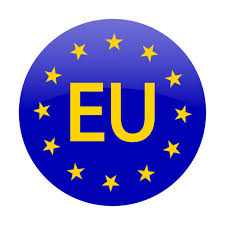
If we look at the history of the EU, we can see that predictions about the dissolution of the union have been made since the days it was first established. However, the Covid-19 pandemic, which emerged at the end of 2019, the Brexit process and the rising nationalism movements experienced with the election of Donald Trump as president in the United States, have increased doubts about the future of multinational institutions such as the European Union.
If we remember the days of vaccine nationalism; many developed countries such as Britain, have accumulated more vaccines than needed in their country, which is not befitting the spirit of international solidarity. In addition, the fact that such developed countries do not provide vaccines and/or health equipment even to developing countries, especially Africa, has increased the waves of nationalism.
Apart from the pandemic period, it was also a surprising development that the UK left the European Union with the Brexit process, saying that it would prioritize its national interests, especially in the economic field. Britain, which left the EU after the referendum, albeit by a very small margin, stated that it would now prioritize its own national interests over international unions in the international arena.
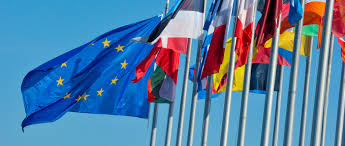
On the other hand, the election of nationalist-conservative Donald Trump as president in America in 2016 also damaged the European Union phenomenon, at least during his 4-year presidency. Acting with the motto “America First“, Trump acted coldly and harmed international unions such as the EU, stating that the interests of the American State and nation come first in both politics and economy. In addition, the strongest candidate in the November 5, 2024 US Presidential Elections is currently Donald Trump as the candidate of the nationalist conservative republicans. This will continue to threaten the future of the the union.
Future of Next Generation EU
We would like to make a final evaluation in the light of all this information. Despite global risks such as Brexit, Pandemic and the possibility of Donald Trump second presidency, the European Union project is still the most logical formation for continental Europe.
As the famous historian Noah Harari, whom we frequently mention on our website, always states; “Instead of solving the global problems of today’s globalizing world with only local and nationalist perspectives, we need to find solutions through global and international organizations and unions.”

